Knead up some delicious flatbread pizza dough (using yeast)
I'm kind of a pizza crust snob. I don't want the store-bought stuff, I want something homemade! Enter this crazy delicious flatbread pizza dough. I'm obsessed with the simplicity of this recipe. Mix a few things together, let it sit in the fridge to ferment, and you've got yourself a flatbread dough to fulfill all your pizza dreams. The best part is, you can make the dough ahead of time and let it sit in the refrigerator for up to five days!
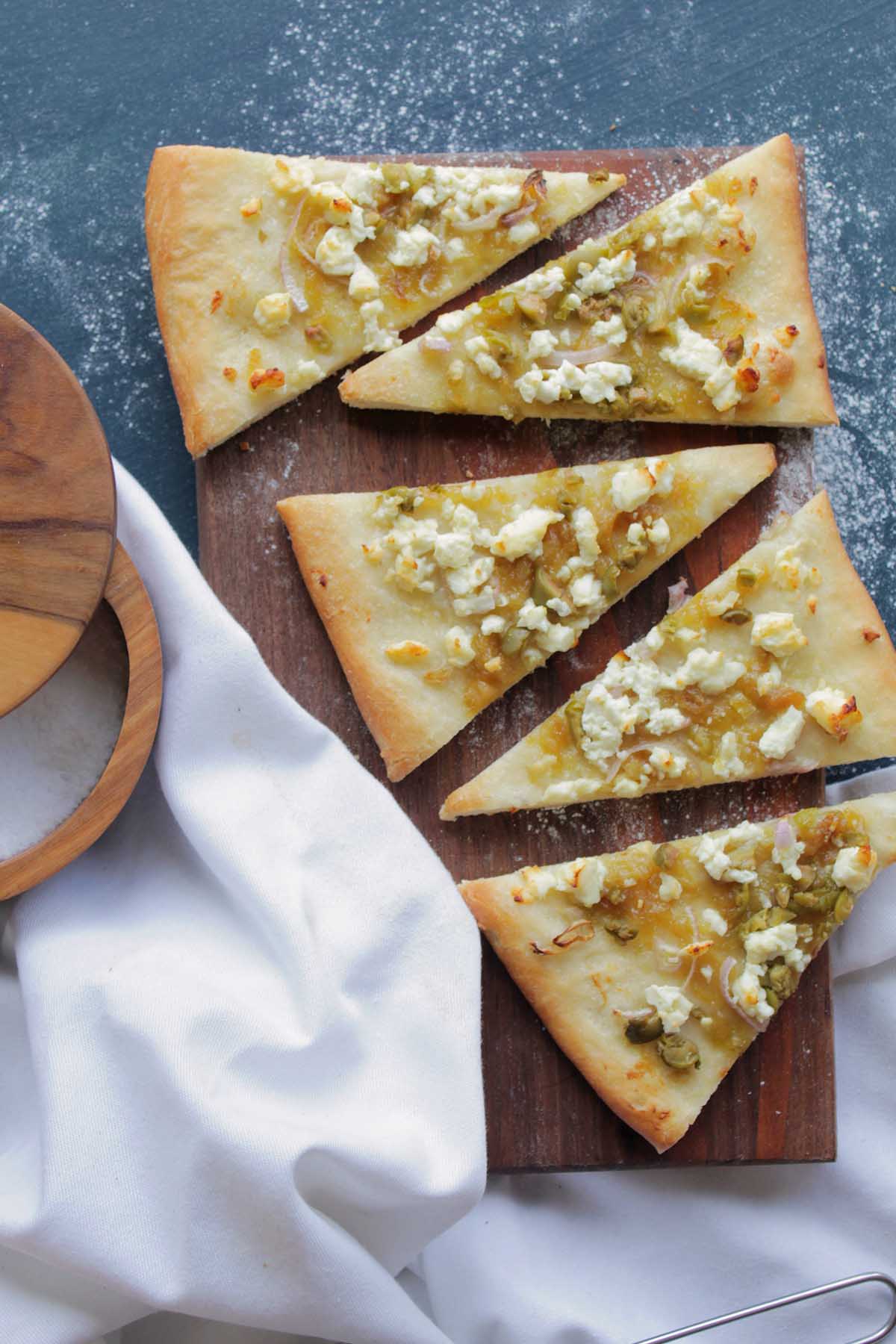
Want To Save This Article?
Enter your email below and we'll send it straight to your inbox. Plus, you'll receive new weekly recipe inspiration.
Jump to:
If you love flatbread pizza as much as I do, trust me when I say this is doing to be your new go-to recipe. This recipe has grown to be a lifesaver for me. I can make the dough well in advance, throw it in the fridge, and pull it out when I'm ready to eat some pizza.
This recipe is perfect to use with any toppings you can dream of! Mix and match toppings to make a flatbread your kids will love, something for date night, or to entertain on a Saturday night. It's a super versatile recipe, which is part of the reason I love it so much!
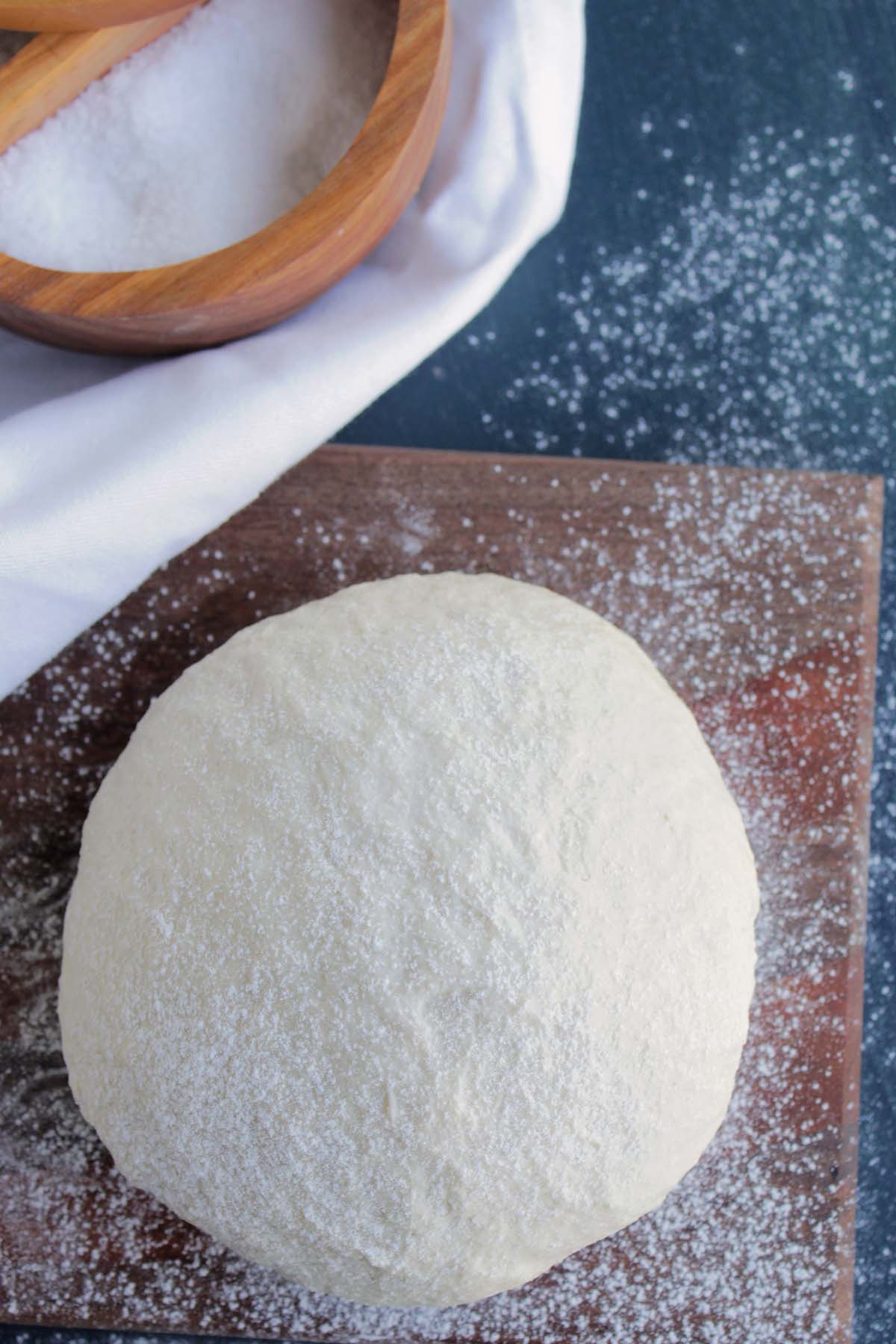
What You'll Learn In This Recipe
You'll learn a thing or two about making flatbread dough from this recipe, including:
- What technically qualifies as a flatbread pizza - is there only one right answer?
- How cold fermentation helps deepen the flavor complexity of the dough.
- A test to see if your active dry yeast is actually working.
If you’re interested in other baking tips, sign up for my free email series that gives you 10 great tips on how to improve your baking skills.
What Is Flatbread Pizza?
It's hard to really define what flatbread pizza is. If you dig around the internet enough, you'll see very different definitions of flatbread pizza, depending on each person's preference.
Some people believe flatbread should be unleavened, or use a leavener (rising agent) like baking soda or baking powder. Others, prefer air bubbles in their flatbread dough.
Some people believe flatbread is defined by the shape - rectangular vs. the traditional round pizza. At the end of the day, YOU get to decide what makes a flatbread different than a traditional pizza recipe.
To help you get a better idea of the characteristics of this flatbread pizza dough recipe, here are some quick notes:
- This recipe is made with yeast, which means it needs time to rise before baking. The yeast adds a nice flavor and a sour bite if it sits in the fridge for the full 5 days.
- While traditional pizza dough shouldn't be rolled (with a rolling pin) so you can have nice air bubbles, I prefer to roll the flatbread dough to keep it nice and thin.
- This dough recipe will make two individually sized flatbread pizzas. I prefer to shape it in a rectangle.
Ingredient Notes
This recipe just requires a few key ingredients, which is part of the reason I love it so much! You can easily scale up the ingredients to make multiple batches of dough at the same time.
Active Dry Yeast: This is our leavening (rising) agent for the flatbread. Be sure your active dry yeast is still fresh, otherwise, the dough won't rise. You'll know it's fresh because it will start to become foamy after about 5 minutes of being mixed with sugar and water. If it's not foamy, you'll need to toss the yeast and buy new!
Sugar: Sugar helps "feed" the yeast. Meaning, it encourages the production of carbon dioxide to help the dough rise.
Bread Flour: We're using bread flour in this recipe to give the dough more of a chewy texture. Bread flour has a protein content of around 11-13%, which is higher than all purpose flour.
Fine Sea Salt: Make sure to use fine salt so it distributes easily throughout the dough.
Extra Virgin Olive Oil: I love the taste that olive oil adds to the dough! No need to purchase an expensive oil olive for this recipe.
Whole Milk Greek Yogurt: Some flatbread dough, like naan for example, use yogurt as an ingredient. This helps the dough stay tender, while also giving the dough a nice touch of browning when it comes out of the oven. That's thanks to the milk proteins.
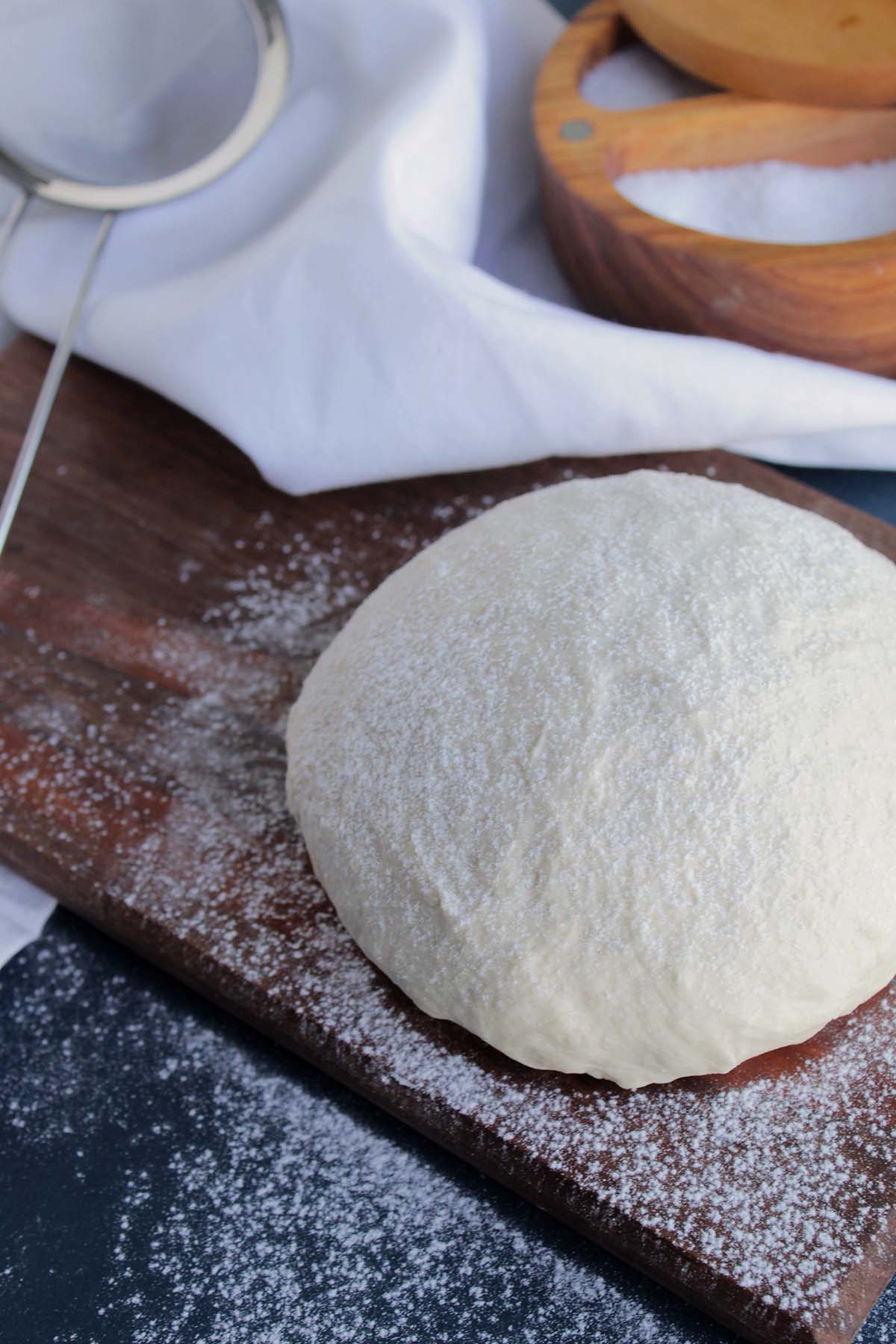
Tools & Equipment
This recipe requires very minimal tools! I wanted to make this recipe accessible to everyone, so no mixer is required. Here's what you'll need:
Recipe Frequently Asked Questions
Give the dough about 30 minutes - 1 hour to sit on the counter and reach room temperature. You'll know it's ready when the dough feels soft and pliable when you roll it around your hands.
Pizza ovens get super hot to encourage a browned and slightly crispy crust. They also make sure to thoroughly cook the toppings. While we may not have a pizza oven in our kitchen, we can crank up our home ovens to a really high temperature (450°F) to encourage a similar effect.
This is a technique called cold fermentation. Fermentation happens after the dough has been kneaded. It's the stage where the yeast eats the sugar and carbon dioxide is released which aids in the rising process of the dough.
Typically, yeast is left in a warm area during fermentation to speed up the process. However, cold fermentation allows the flavor of the dough to deepen and develop into something more complex and tasty. This is why, in my opinion, the dough tastes better after 5 days of sitting in the refrigerator.
Personally, I like the taste of the dough even better after it has sat for 5 days. It gives the dough time to develop even more flavor. You will be able to taste the olive oil even more, and there might be a slightly sour taste (like sourdough bread almost).
The possibilities are endless! You can choose your favorite toppings including meat, cheese, vegetables, and more! Remember, you don't always have to use a red sauce with flatbread. Try opting for a light dusting of olive oil.

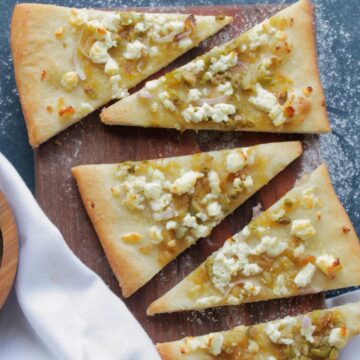
Flatbread Pizza Dough
Ingredients
- 1 teaspoon active dry yeast
- 2 teaspoons sugar
- 2 ¼ cups, plus more for dusting bread flour
- ¾ teaspoons fine sea salt
- 2 tablespoons extra virgin olive oil
- ¼ cup whole milk plain Greek yogurt
Instructions
- In a small saucepan, warm ½ cup (113 grams) of water over medium-low heat until it reaches 110°F on an instant-read thermometer. Transfer water to a medium bowl. Whisk in the yeast and sugar until both are dissolved. Allow the mixture to sit until it’s foamy on top, about 5 minutes.
- Whisk together bread flour and salt in a large bowl. Add in yeast and water mixture. Mix together with a silicone spatula until water has absorbed. Add in olive oil and Greek yogurt. Continue to mix until a shaggy dough forms, some flour may still remain in the bowl.
- Using clean hands, pour the dough onto a clean work surface. Continue to incorporate any loose flour and knead the dough by hand for an additional five minutes.
- Place dough into a greased medium sized bowl. Cover with plastic wrap and place in the refrigerator for 6 hours (or up to 5 days) to allow for a cold rise.
- When you're ready to bake the flatbread, allow the dough to come to room temperature by placing on the counter for 30-60 minutes. Heat oven to 450°F (230°C).
- Dust a clean work surface with a light dusting of flour. Cut flatbread dough in half. Roll one piece of dough with a rolling pin into a rectangular shape (about 6 x 12 inches). Place the dough on a baking sheet lined with parchment paper. Top with desired toppings. Bake for 13-17 minutes until the crust is golden brown and the cheese has melted.

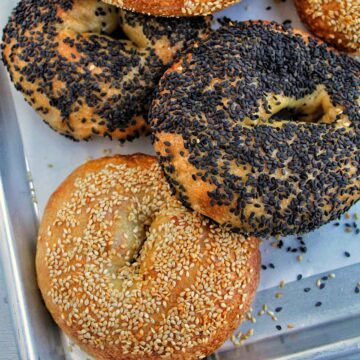
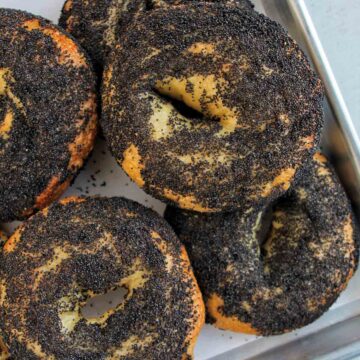
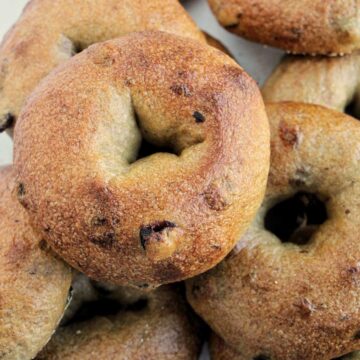

Susan
This is one of the easiest flatbread dough recipes I've made. Thanks so much for the straight forward instructions. My whole family loved this recipe. We made pepperoni flatbreads.